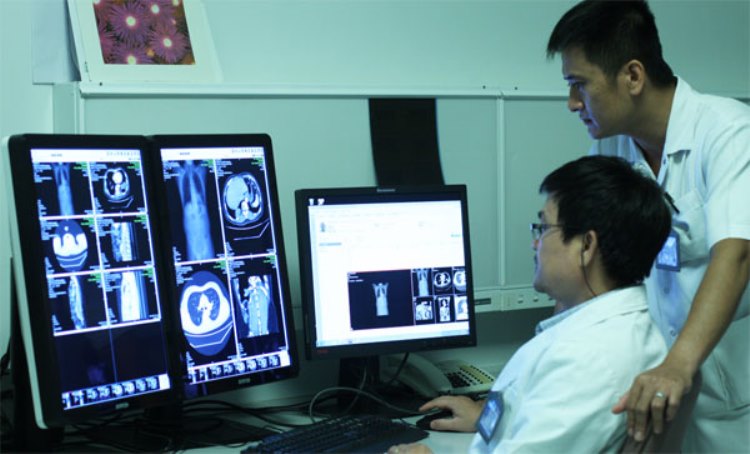FV’s new Picture Archiving and Communication System (PACS) allows the storing of imaging to enable prompt image sorting and efficient archiving. The utilisation of PACS enables radiologists and primary physicians to access all images immediately after a scan is complete without waiting for a film to be produced. This prompt process improves diagnosis and treatment efficiency.
From 22th June 2015, FV Hospital is officially utilising PACS in storing and sharing clinical images taken at FV Hospital and FV Clinic.
The Picture Archiving and Communication Systems (PACS) at the Imaging Department, FV Hospital, is a closed system that comprises four components:
- Imaging equipment, such as CT scanner, MRI scanner, X-Ray scanner and ultrasound equipment.
- A secure computer network for effective data communication.
- Computer workstations equipped with high resolution screens to provide optimised clinical images to facilitate speedy diagnosis and treatment.
- A data centre for archiving data with restricted access to ensure complete confidentiality.
Now that PACS is in use at the Imaging Department, FV Hospital can now offer more convenient storage and sorting of images whenever patients are in need of imaging services, saving them time.

Radiologists no longer have to work with complicated radiological films to reach a diagnosis. They can now work with radiological high quality images, including 2D and 3D images, which are transferred to workstations immediately after each scan.
Primary physicians can enter a patient code into the PACS system and access all imaging results for that patient via electronic medical records (EMR).
Three key benefits of PACS in clinical picture archiving and communication
- As a replacement of conventional archiving, PACS is a paperless and filmless solution that saves costs on data maintenance as archiving digital data on computers or CD/DVD is much less expensive.
- The transmission of radiological patient images, diagnoses, education, image access and reports can be done by remote access. Physicians from various locations can access and view one image at the same time (teleradiology, telemedicine.)
PACS can be combined and is compatible with other electrical systems, such as the Hospital Information System (HIS) Radiology Information System (RIS) and Electronic Medical Record (EMR) to better control imaging procedures and scheduling of patients at the Imaging Department. Scan timing, times of scans and appointments and other information are also better managed thanks to this system.

 Vi
Vi 












